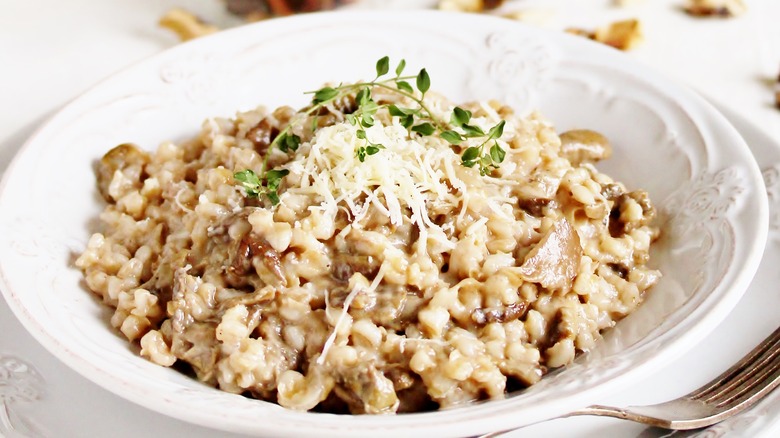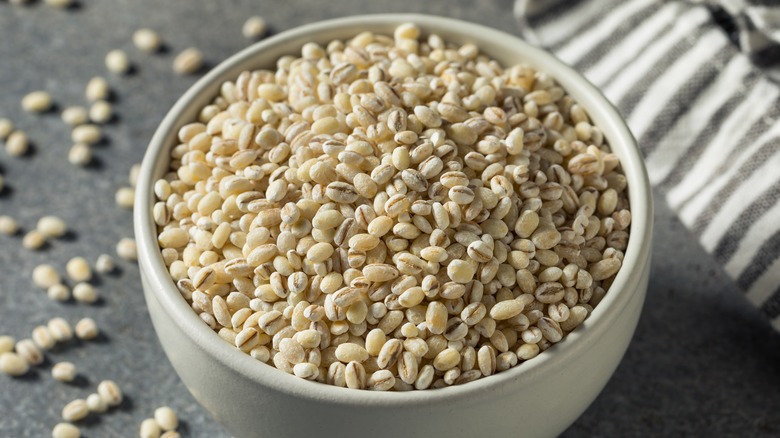The Best Type Of Barley To Use For Risotto
It's hard not to love risotto. Risotto, a dish that often appears on the menu at restaurants next to the pasta course and is made from arborio rice, is a staple of Italian cuisine. It can be as simple as a classic parmesan risotto or as luxurious as a lobster risotto. Whatever you choose, you're in for something that is beautifully creamy and packed with flavor. There is, however, another risotto-like dish, called orzotto, that is at once healthier and potentially more flavorful than its rice-based counterpart.
Orzotto, despite its name, is not made using the tiny, rice-shaped orzo pasta we're all familiar with here in America. In Italian, "orzo" translates to barley, according to Italia Outdoors. So, if you're making your way through a crowded market — as one should when in Italy — and come across a display labeled "orzo", you're looking at barley. Barley has been grown in Italy since Roman times, and orzotto is a product of the northern regions of the peninsula — Trentino and Friuli Venezia Giulia — where grain is easier to grow. That's all well and good for the Italians, but what about those of us who want to make orzotto over here? Fortunately, we're in luck, because the type of barley needed to make the best orzotto is readily available stateside.
The best barley is pearl barley
When you're out shopping for barley to use in your orzotto, it's good to know exactly which type to buy for the best results. The type you want is what's known as pearl barley. According to Great British Chefs, pearl barley is harvested from ears of barley and processed in such a way that the hull is removed. At this stage, it's known as "hulled" or "de-hulled". While the hull is gone, the bran is still on, which gives the barley more nutrients but takes far longer to cook. The "pearling" process removes the outer bran and gives the barley a polished, shiny look. With the bran removed, the cooking time will be much quicker.
This is where the similarity to arborio rice comes in. MasterClass explains that pearl barley cooks at the same rate as arborio rice, making it ideal for orzotto. When cooking with pearl barley, as you would with risotto, make sure that whatever broth you are using is on hand and warm. The cold broth will shock the barley and may not absorb properly. The broth will release the starches in the barley, which is what imparts the orzotto with its creamy texture. Pearl barley is highly nutritious and has a neutral cereal taste, per Great British Chefs. So, swapping out your arborio for barley for your next risotto night won't just be healthier, but a little tastier too.

